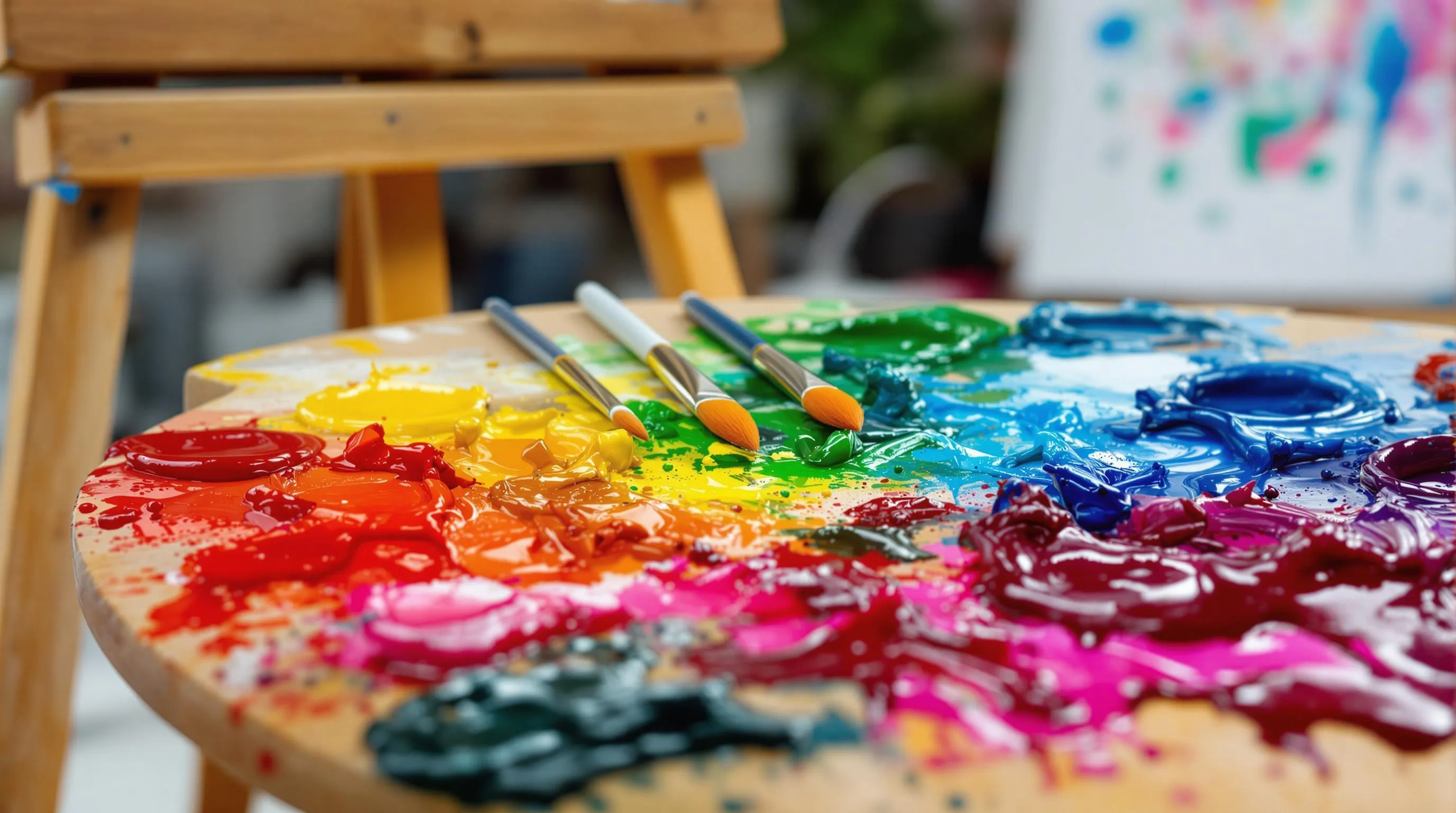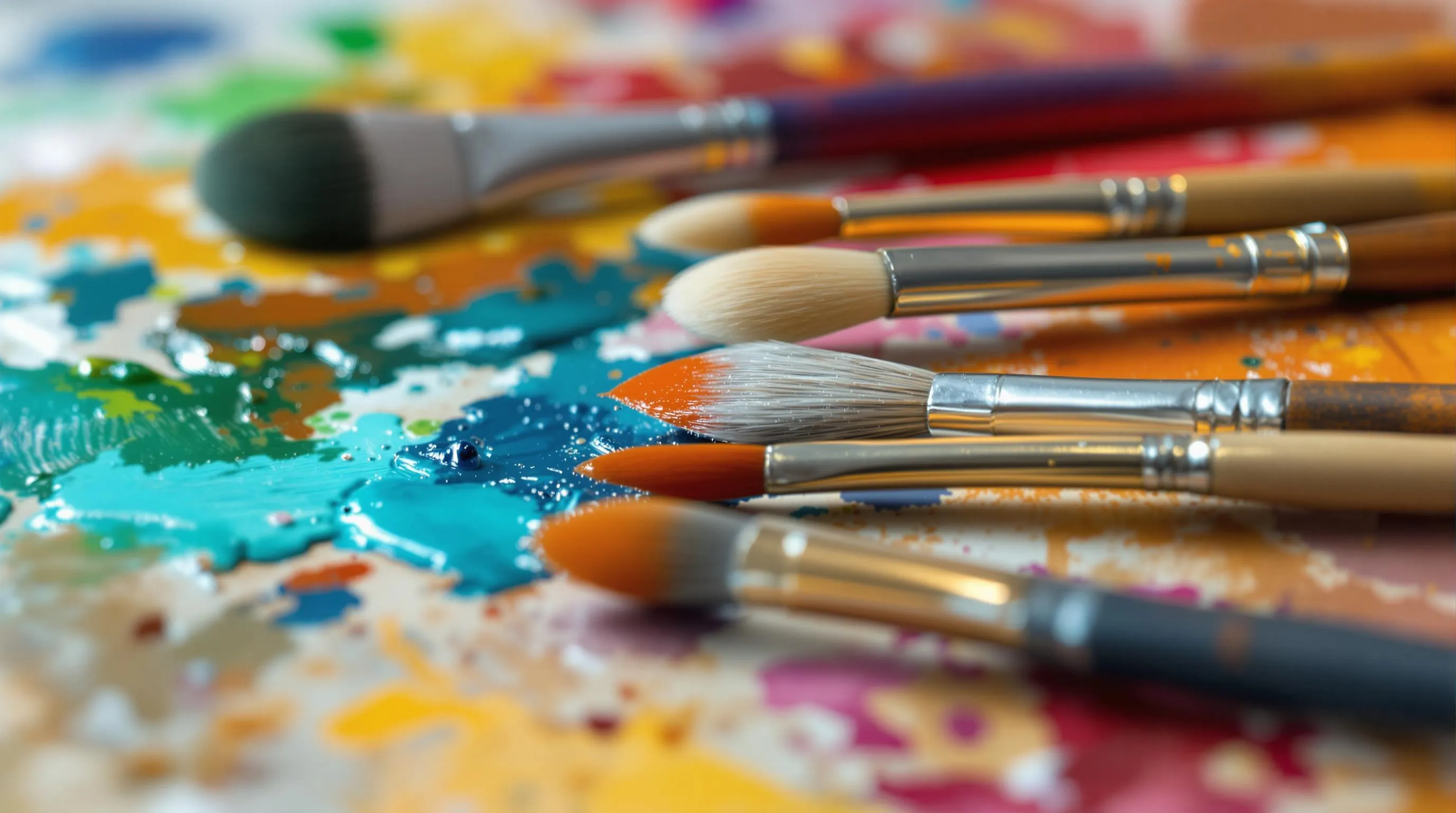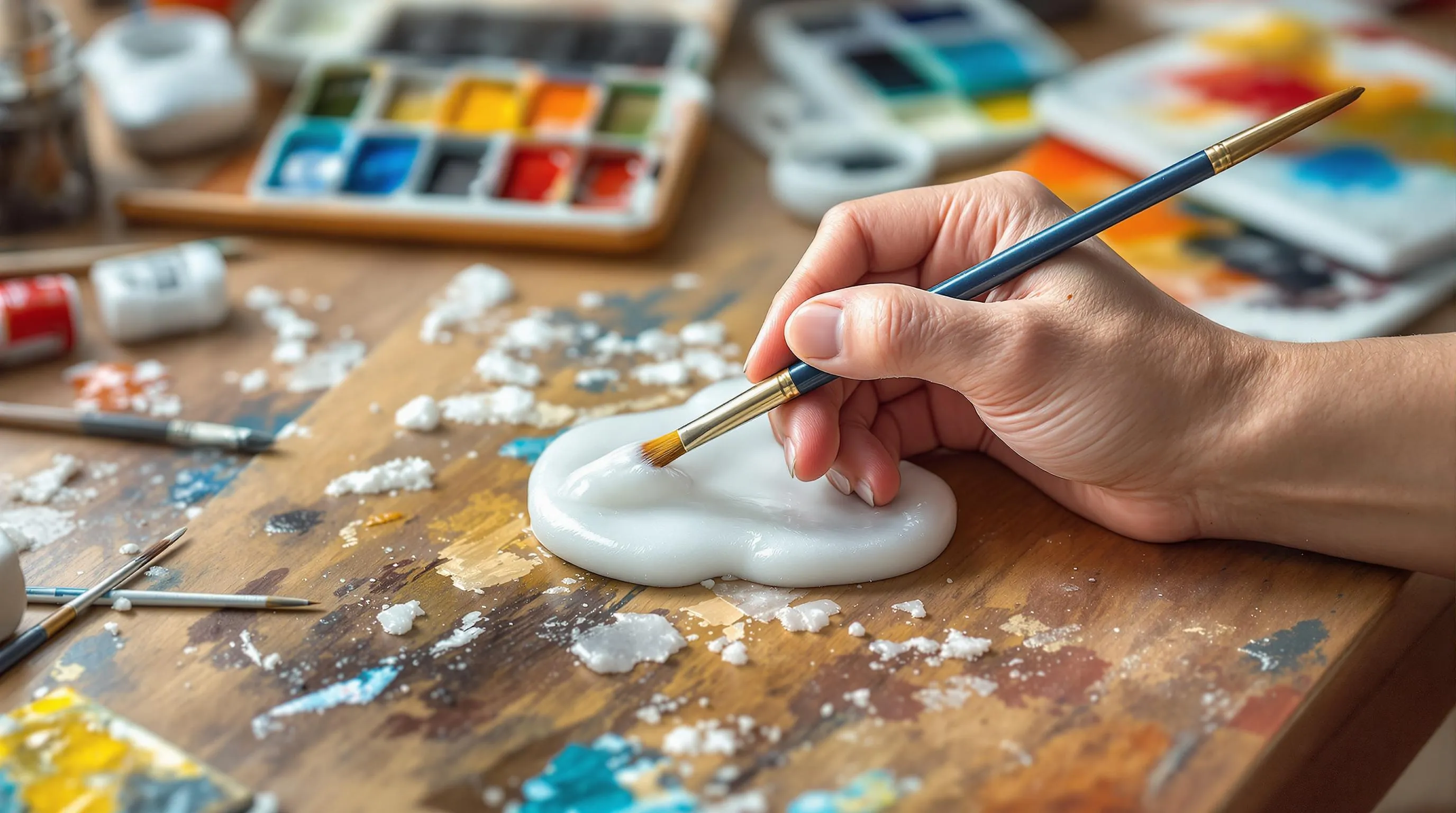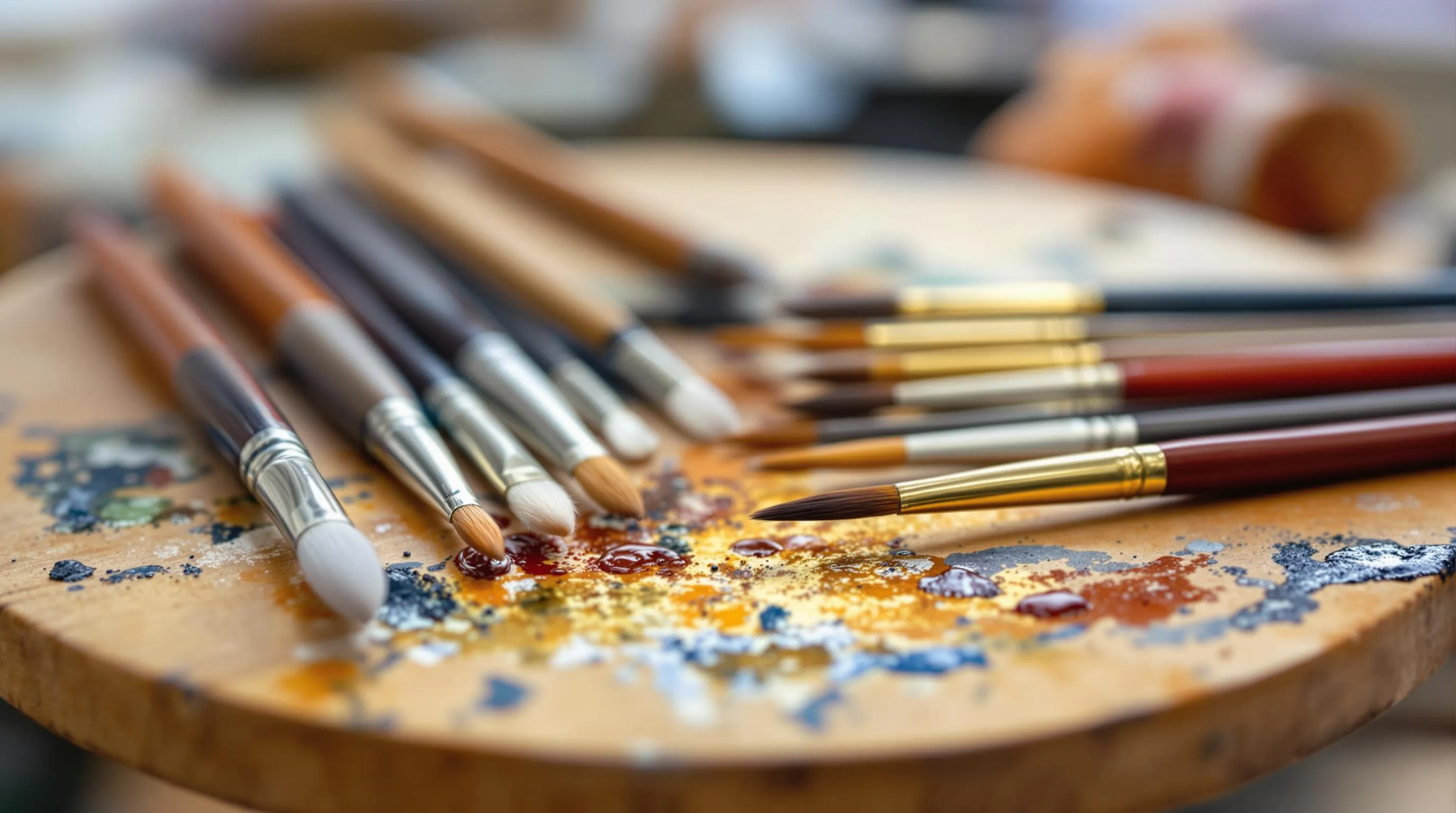Choosing the right paint brush can make or break your oil painting masterpiece. We’ve all experienced the frustration of watching our carefully mixed colors turn muddy or lose their vibrancy because of poor-quality bristles that shed, clump, or fail to hold paint properly.
Oil painting demands exact brush characteristics that differ dramatically from watercolor or acrylic tools. The thick consistency of oil paints requires brushes with sturdy bristles that can handle heavy pigment loads while maintaining their shape stroke after stroke. Whether you’re creating bold impasto textures or delicate glazing techniques, the brush in your hand determines how effectively you’ll translate your artistic vision onto canvas.
We’ve tested dozens of oil painting brushes across different price points and bristle types to identify the tools that’ll elevate your artwork. From natural hog bristles that excel at blending to synthetic alternatives that offer precision and durability, we’ll guide you through the essential characteristics that separate professional-grade brushes from amateur options.
Natural Bristle Brushes: The Traditional Choice for Oil Painting
Natural bristle brushes remain the gold standard for oil painting, offering superior paint loading capacity and blending capabilities that synthetic alternatives struggle to match.
Hog Bristle Brushes for Bold Strokes
Hog bristle brushes excel at handling thick oil paint applications and creating bold, expressive strokes. These robust brushes feature stiff bristles that maintain their shape under pressure, making them perfect for impasto techniques and heavy paint application. We’ve found that hog bristles naturally hold more paint than synthetic options, allowing for longer working time without constant reloading.
Professional artists favor hog bristle flats for blocking in large areas and creating strong directional marks. The natural split ends of hog bristles create subtle texture variations that add visual interest to paint surfaces. Quality hog bristle brushes like Winsor & Newton Winton series or Escoda Clasico line typically last 2-3 years with proper care and cleaning.
Filbert shaped hog bristle brushes offer versatility for both broad strokes and edge work. Their rounded edges blend colors smoothly while maintaining enough spring to create controlled marks. We recommend keeping separate hog bristle brushes for light and dark colors to prevent muddy mixtures.
Sable Brushes for Fine Detail Work
Sable brushes provide unmatched precision for detailed oil painting work and smooth color transitions. These premium brushes feature incredibly soft yet resilient hair that holds its point exceptionally well. Kolinsky sable represents the finest quality, sourced from the tail hair of Siberian weasels and prized for its perfect balance of softness and spring.
Round sable brushes excel at creating fine lines, small details, and smooth gradations in oil paintings. The natural taper of sable hair allows for both broad washes and precise detail work with a single brush. We’ve tested brushes from Series 7 Winsor & Newton and found they maintain their points for 12-18 months with regular use.
Flat sable brushes work beautifully for glazing techniques and creating soft edges in oil paintings. Their ability to hold substantial amounts of thinned paint makes them ideal for transparent color applications. Quality sable brushes require careful cleaning with solvents followed by soap and water to preserve their natural properties.
Mongoose Brushes for Versatile Application
Mongoose brushes bridge the gap between soft sable and stiff hog bristle, offering exceptional versatility for oil painting. These brushes feature hair from the Asian mongoose, which provides moderate stiffness with excellent paint holding capacity. We’ve discovered that mongoose brushes work particularly well for medium consistency oil paint applications.
Flat mongoose brushes handle both detail work and broader stroke applications effectively. Their moderate spring allows for controlled blending while maintaining enough firmness for textural effects. Artists working in alla prima techniques often prefer mongoose brushes for their ability to move paint smoothly across the canvas surface.
Round mongoose brushes excel at creating varied line weights and controlled color mixing directly on the canvas. The natural resilience of mongoose hair prevents brush marks from becoming too pronounced while still allowing for expressive mark making. Quality mongoose brushes from manufacturers like Rosemary & Co or Jackson’s Art Supplies typically cost 30-40% less than comparable sable brushes while offering similar performance characteristics.
Synthetic Brushes: Modern Alternatives for Oil Paint

Synthetic brushes engineered from nylon or polyester fibers have revolutionized oil painting by offering reliable performance at accessible price points. We’ve found these modern alternatives effectively mimic natural bristle characteristics while providing unique advantages that traditional brushes can’t match.
Synthetic Bristle Benefits and Performance
Consistent shape retention sets synthetic brushes apart from their natural counterparts, as their bristles maintain structural integrity without splitting during extended painting sessions. We’ve observed that synthetics excel at precise mark-making and deliver exceptional control for both fine lines and even color blends across various oil painting techniques.
Adaptability makes synthetic brushes versatile tools for multiple applications, from laying down smooth washes to creating detailed line work. Their non-porous fibers absorb less paint than natural bristles, which means more pigment stays on your canvas rather than disappearing into the brush. Cleanup becomes significantly easier with synthetics because their smooth fibers release paint readily during washing, allowing for efficient color mixing and reuse.
Edge retention remains superior in synthetic brushes over time, particularly for artists who require consistent fine detail work. We’ve tested many synthetics and found they withstand rigorous use while maintaining their original shape and spring characteristics.
Best Synthetic Brands for Oil Painting
Winsor & Newton leads the synthetic brush market with ranges specifically engineered for oil paint application, offering bristles that simulate natural hog hair stiffness while providing enhanced durability. Princeton delivers exceptional synthetic options that match the resilience and spring characteristics of traditional sable and hog bristles for optimal paint handling.
Rosemary & Co produces premium synthetic brushes designed to replicate the performance of natural hair while offering superior longevity and consistent results. We’ve found these leading brands focus on creating synthetics that provide the stiffness oil painters need for effective paint manipulation and smooth application.
Brand selection should prioritize synthetics that match natural bristle performance characteristics, particularly the stiffness and spring properties that make hog and sable brushes so effective for oil work.
Durability and Maintenance Advantages
Superior longevity distinguishes synthetic brushes from natural alternatives, as their engineered fibers resist shedding and bending even under demanding painting conditions. We’ve observed that synthetic bristles maintain their structural integrity when exposed to harsh cleaning agents that might damage natural hair.
Maintenance requirements become minimal with synthetic brushes due to their resistance to damage from aggressive cleaning techniques. Regular cleaning with appropriate solvents extends their usable life significantly, while proper storage ensures reliable performance for years of oil painting projects.
Resistance to environmental factors makes synthetics ideal for artists working in varying conditions, as they don’t respond to humidity changes like natural bristles. We’ve found that synthetics provide consistent performance regardless of studio temperature or moisture levels, making them dependable tools for professional oil painters.
Brush Shapes and Their Specific Uses in Oil Painting

Selecting the right brush shape dramatically impacts your oil painting technique and final results. Each shape serves distinct purposes in our artistic process.
Flat Brushes for Broad Coverage
Flat brushes excel at covering large areas quickly and efficiently with thick oil paint. These brushes feature wide, straight edges that make them perfect for blocking in background colors and establishing basic shapes on your canvas. Bold strokes come naturally with flat brushes as their stiff bristles push paint effectively across textured surfaces.
Chiseling sharp edges becomes effortless when you turn the brush sideways and use its narrow edge. We’ve found that flat brushes work exceptionally well for creating architectural elements like building corners or horizon lines. Long, sweeping strokes for sky gradations and water reflections benefit from the flat brush’s ability to hold substantial amounts of paint.
Round Brushes for Detail and Blending
Round brushes provide unmatched precision for intricate details and delicate blending work. Their pointed tips allow us to paint fine elements like facial features, tree branches, and decorative patterns with exceptional control. Soft color transitions happen smoothly when using round brushes in gentle circular motions.
Detailed work such as painting eyes, jewelry, or small flowers requires the accuracy that only round brushes can deliver. Blending colors seamlessly becomes possible through the round brush’s ability to feather edges and create subtle gradations. Various sizes of round brushes offer versatility from tiny detail work with size 0 brushes to broader applications using size 12 rounds.
Filbert Brushes for Soft Edges
Filbert brushes combine the coverage of flat brushes with the softness of round brushes through their unique oval shape. These versatile tools create naturally soft edges without the harsh lines that flat brushes sometimes produce. Smooth color blending occurs effortlessly as the rounded corners of filbert brushes eliminate sharp transitions.
Organic shapes like clouds, foliage, and skin tones benefit greatly from filbert brushes’ ability to create gentle curves and flowing lines. We recommend filbert brushes for portrait work where soft modeling of facial features creates realistic depth and dimension. Medium to large filbert brushes work perfectly for painting flower petals and leaves with their characteristic soft edges.
Fan Brushes for Texture Effects
Fan brushes create distinctive texture effects that would be difficult to achieve with other brush shapes. These specialized brushes excel at painting grass, fur, hair, and foliage through their spread bristles that create multiple marks simultaneously. Dry brushing techniques with fan brushes produce realistic tree bark textures and weathered wood surfaces.
Removing unwanted brushstrokes becomes simple when you lightly drag a clean fan brush over wet paint to soften harsh marks. We use fan brushes to create atmospheric effects like falling snow, rain, or dust particles by gently stippling the canvas surface. Large areas requiring subtle texture, such as distant mountains or cloudy skies, benefit from the fan brush’s ability to create soft, irregular patterns without obvious brush marks.
Size Selection: Choosing the Right Brush Dimensions

Choosing the correct brush size is fundamental to achieving professional results in oil painting. We’ll guide you through selecting optimal dimensions for different painting applications based on our extensive testing.
Small Brushes for Intricate Details
Round brushes excel at creating fine details and precise strokes when working on intricate areas of your painting. We recommend sizes ranging from 20/0 to 5/0, which translates to approximately 1/16 to 1/4 inch in width for maximum control over small elements.
Hog bristle construction provides excellent paint loading capacity for detailed work, while synthetic alternatives offer superior precision for ultra-fine lines. These diminutive tools allow you to add finishing touches like facial features, texture details, and small highlights that bring your paintings to life.
Artists working on miniature paintings or botanical illustrations particularly benefit from the smallest sizes in this range. The 20/0 size delivers unmatched precision for elements requiring surgical accuracy, such as eyelashes or leaf veins.
Medium Brushes for General Painting
Filbert brushes measuring 1/4 to 1/2 inch wide serve as our workhorses for general painting applications. These versatile tools excel at blending colors seamlessly and creating smooth transitions between different paint areas.
Flat brushes in similar size ranges prove invaluable for creating sharp edges and filling moderately sized sections efficiently. We find these dimensions ideal for painting elements like tree branches, architectural details, and mid-ground subjects that require both precision and coverage.
Medium brushes bridge the gap between detail work and broad strokes, making them essential for developing the main body of your painting. Artists can achieve excellent color mixing directly on the canvas using these sizes while maintaining control over paint application.
Large Brushes for Backgrounds and Washes
Flat brushes ranging from 3/4 to 1 inch wide dominate our toolkit when covering expansive areas like skies, water surfaces, and large background elements. These substantial tools move paint efficiently across the canvas while maintaining consistent coverage.
Filbert brushes in larger dimensions provide excellent blending capabilities for atmospheric effects and soft background transitions. We use these brushes to establish broad color relationships and create foundational layers that support the entire composition.
Long handle construction becomes particularly important with large brushes, allowing you to work at arm’s length while maintaining proper perspective on your painting. This distance prevents you from getting too focused on small details when establishing the overall composition and color harmony.
Top-Rated Oil Paint Brush Brands and Models

We’ve tested many oil paint brush brands to identify the models that consistently deliver professional results. These four brands represent the pinnacle of brush craftsmanship, offering distinct advantages for different painting approaches.
Winsor & Newton Series 7 Kolinsky Sable
Winsor & Newton Series 7 Kolinsky Sable brushes are made from the finest Kolinsky sable hair, providing superior control and color flow that’s unmatched in the industry. These brushes excel at maintaining their point even after extensive use, making them ideal for detailed oil work and precision blending. Artists appreciate their exceptional paint holding capacity and the way they respond to subtle pressure changes during application.
Professional painters often choose Series 7 brushes for portrait work and fine detail applications where absolute precision is essential. The natural sable fibers create smooth color transitions and allow for effortless paint manipulation across the canvas surface.
Escoda Versatil Synthetic Brushes
Escoda Versatil Synthetic brushes offer remarkable durability while maintaining a sharp point that rivals natural fiber alternatives. These synthetic brushes are specifically engineered for oil painting applications, providing consistent performance across various paint viscosities. Their synthetic construction makes them easier to clean than natural brushes while delivering reliable color application session after session.
Artists who prefer cruelty free options find Escoda Versatil brushes particularly appealing due to their ethical manufacturing process. The synthetic fibers resist damage from harsh cleaning solvents commonly used with oil paints, ensuring longer brush life and consistent performance.
Rosemary & Co Ivory Series
Rosemary & Co Ivory Series brushes are crafted with meticulous attention to detail, offering exceptional performance for professional oil painting applications. These brushes feature carefully selected natural bristles that provide optimal paint loading and smooth color delivery across various canvas textures. The series includes multiple brush shapes and sizes, allowing artists to tackle everything from large background areas to intricate detail work.
British craftsmanship shines through in every Ivory Series brush, with hand tied ferrules and precisely shaped bristles that maintain their form through countless painting sessions. Artists consistently praise their balanced feel and responsive handling characteristics.
Princeton Artist Brush Heritage Collection
Princeton Artist Brush Heritage Collection provides both natural and synthetic options designed specifically for smooth strokes and consistent color delivery in oil painting. This collection offers excellent value for professional quality brushes, making high performance tools accessible to artists at various skill levels. The brushes feature durable construction with secure ferrules that prevent bristle loss during intensive painting sessions.
Students and professional artists alike choose Heritage Collection brushes for their reliable performance and affordable pricing structure. The collection’s variety ensures painters can find the right tool for exact techniques, from bold impasto applications to delicate glazing work.
Brush Care and Maintenance for Longevity

Quality oil paint brushes represent a important investment that pays dividends when properly maintained. We’ve discovered that implementing the right care routine can extend brush life by years while maintaining optimal performance.
Proper Cleaning Techniques for Oil Paint
Start by wiping excess paint off with a rag or paper towel before any liquid cleaning begins. This initial step prevents unnecessary paint buildup and makes subsequent cleaning more effective.
Wash brushes with mild soap and warm water, gently massaging out remaining paint from the bristles. We recommend using gentle circular motions to work the soap through all bristles without applying excessive pressure that could damage the brush structure.
Rinse thoroughly and reshape bristles while wet to maintain the brush’s original form. This step prevents bristles from drying in unnatural positions that could permanently alter their shape.
Condition natural bristle brushes periodically with brush conditioner or mild shampoo to keep them supple and responsive. Natural bristles, particularly hog bristle and sable, benefit from occasional conditioning that restores their flexibility and prevents brittleness.
Clean brushes immediately after use to prevent paint from drying in the bristles. Oil paint hardens quickly once exposed to air, making removal significantly more difficult and potentially damaging to brush fibers.
Avoid soaking brushes in solvent for long periods, as this can damage the bristles and ferrule. Extended exposure to harsh solvents weakens the adhesive holding bristles in place and can cause ferrule corrosion.
Storage Methods to Preserve Brush Shape
Store brushes upright or flat, never resting on their bristles to prevent permanent deformation. Bristles compressed against surfaces lose their spring and develop unwanted bends that affect paint application.
Use brush guards or covers to maintain shape during storage periods. These protective sleeves keep bristles aligned and prevent dust accumulation while allowing proper air circulation.
Avoid airtight containers to allow drying and prevent mildew formation on natural bristles. Proper ventilation ensures complete moisture evaporation and prevents bacterial growth that can damage brush materials.
Position brushes in holders with bristles pointing upward when storing multiple brushes together. This arrangement prevents bristles from pressing against each other and maintains individual brush shapes.
When to Replace Your Oil Paint Brushes
Replace brushes when bristles splay, break, or lose their spring beyond repair. Splayed bristles create uneven paint application and make controlled brushwork nearly impossible.
Consider replacement if the ferrule becomes loose or damaged and affects brush stability. Loose ferrules allow bristles to shift during painting, compromising precision and control.
Discard brushes that no longer hold their shape or fail to distribute paint evenly across the canvas surface. These performance issues indicate that the brush has reached the end of its useful life.
Monitor synthetic brushes for hardening or stiffness that doesn’t improve with cleaning. Synthetic bristles can become permanently altered by paint residue and lose their flexibility over time.
Budget Considerations: Quality vs. Cost Analysis

When selecting oil paint brushes, we find that balancing quality and cost requires understanding how materials and craftsmanship directly impact painting performance. Quality brushes featuring premium natural bristles like Kolinsky sable or hog bristle deliver superior paint retention, spring, and control but command higher prices.
Professional-Grade Brushes for Serious Artists
Professional brushes represent the pinnacle of brush craftsmanship, typically ranging from $20 to $100+ per brush depending on size and materials. Winsor & Newton, Escoda, Da Vinci, Royal & Langnickel, and Rosemary & Co lead the market with brushes crafted from premium natural bristles and high-quality synthetics.
These top-tier brushes feature longer bristles that provide enhanced spring and fluidity for professional techniques. Kolinsky sable brushes from these manufacturers offer unmatched precision for detailed work, while their hog bristle varieties excel at paint loading and blending. Professional artists often invest $200-500 in a complete brush set, understanding that quality tools directly influence artistic outcomes.
Grumbacher Professional Brushes, though discontinued, remain highly sought after on secondary markets due to their exceptional longevity and performance. Artists who own these brushes often report decades of reliable use with proper care.
Student-Grade Options for Beginners
Beginning artists benefit from synthetic or mixed bristle brushes that mimic natural hair behavior at accessible price points of $3-15 per brush. Utrecht brushes provide excellent entry-level quality with decent durability, featuring slightly shorter bristles than premium options while maintaining adequate performance for learning.
Synthetic brushes allow novice painters to experiment without substantial upfront investment while offering easier maintenance than natural alternatives. These brushes typically last 6-12 months with regular use, making them cost-effective for developing fundamental skills. Student-grade options from Rosemary & Co and other reputable manufacturers ensure beginners don’t sacrifice too much quality while managing costs.
Beginning painters can build a functional brush set for $50-100, focusing on essential shapes and sizes rather than premium materials.
Best Value Brushes for Intermediate Painters
Intermediate artists seeking quality without premium pricing find exceptional options in the $6-25 range per brush. Rosemary Ultimate Long Flats exemplify this sweet spot, offering longer bristles for fluid strokes at approximately $6 per brush, making them favorites among developing artists.
Escoda and Da Vinci brushes provide outstanding durability and craftsmanship in mid-price ranges, with natural and synthetic options that maintain professional performance with moderate investment. These brushes typically last 2-3 years with proper care, delivering excellent long-term value.
Winsor & Newton mid-range brushes offer reliability and consistent quality that bridges the gap between student and professional grades. Intermediate painters can build comprehensive brush collections for $150-300, investing in versatile shapes and sizes that support artistic growth while maintaining budget consciousness.
Conclusion
We’ve covered everything you need to know about selecting the best oil paint brushes for your artistic journey. Whether you’re drawn to the traditional performance of natural bristles or the modern reliability of synthetic alternatives each brush type offers unique advantages that can elevate your painting technique.
Remember that investing in quality brushes isn’t just about immediate results – it’s about building a foundation for long-term artistic growth. The right brush becomes an extension of your creative vision allowing you to execute techniques with confidence and precision.
Start with a few essential brushes that match your current skill level and painting style. As your expertise develops you’ll naturally discover which exact tools work best for your unique approach to oil painting.
Frequently Asked Questions
What type of bristles are best for oil painting brushes?
Natural hog bristles are considered the gold standard for oil painting due to their superior paint loading and blending capabilities. They’re ideal for bold strokes and impasto techniques. For fine detail work, Kolinsky sable brushes offer exceptional precision and point retention. Mongoose brushes provide a versatile middle ground, combining qualities of both sable and hog bristle for various oil painting applications.
Are synthetic brushes good for oil painting?
Yes, modern synthetic brushes are excellent for oil painting and offer reliable performance at accessible prices. They effectively mimic natural bristle characteristics while providing consistent shape retention and exceptional control. Synthetic brushes are also easier to clean, more durable, and resistant to environmental changes, making them dependable tools for both beginner and professional oil painters.
What brush shapes should I use for different oil painting techniques?
Flat brushes are perfect for covering large areas and creating bold strokes. Round brushes excel at detail work and blending. Filbert brushes, with their soft edges, are ideal for organic shapes and portrait work. Fan brushes create distinctive texture effects for elements like grass, fur, and atmospheric effects. Each shape serves specific purposes in oil painting techniques.
What brush sizes do I need for oil painting?
Small round brushes (sizes 20/0 to 5/0) are essential for intricate details. Medium filbert and flat brushes (1/4 to 1/2 inch) serve as versatile tools for general painting work. Large flat brushes (3/4 to 1 inch) are ideal for covering expansive areas and creating background washes. Having a variety of sizes enhances control and efficiency in your oil paintings.
Which oil paint brush brands are recommended?
Top-rated brands include Winsor & Newton Series 7 Kolinsky Sable for superior control, Escoda Versatil Synthetic for durability and ethical manufacturing, Rosemary & Co Ivory Series for exceptional performance, and Princeton Artist Brush Heritage Collection for excellent value. These brands consistently deliver professional results across different price points and skill levels.
How do I properly clean and maintain oil paint brushes?
Wipe excess paint immediately after use, then clean with mild soap and warm water. Reshape bristles while damp and condition natural bristle brushes regularly. Store brushes upright with protective covers to maintain their shape. Replace brushes when bristles become splayed or the ferrule loosens. Proper care significantly extends brush lifespan and maintains optimal performance.
How much should I spend on oil paint brushes?
Professional-grade brushes range from $20 to over $100 and offer superior craftsmanship. Beginners can start with student-grade options ($3-$15) to develop skills affordably. Intermediate painters should consider brushes in the $6-$25 range for quality performance without premium pricing. Investment level depends on your skill level, budget, and painting frequency.
What’s the difference between natural and synthetic oil paint brushes?
Natural bristles, especially hog bristle and sable, excel at paint loading and blending but require more careful maintenance. Synthetic brushes offer consistent performance, easier cleaning, and greater durability at lower costs. While natural bristles traditionally provided superior results, modern synthetic alternatives now closely match their performance while offering additional benefits like resistance to damage.







